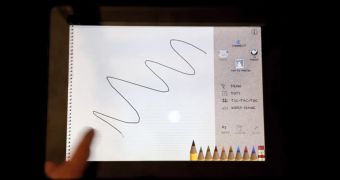Microsoft has been investing big in touch-enabled devices lately, and it appears that it should not be too long before we see some results being delivered to the market.
In addition to designing the upcoming Windows 8 platform with optimizations for use on touch-enabled tablet PCs, the company is also working on ensuring that these devices pack the most advanced technologies available today.
One of them involves the touchscreen panels that tablet PCs and other devices that rely on touch interaction for input and navigation use.
A recent video coming from Microsoft’s Applied Sciences Group shows a highly responsive touch panel that could make it inside devices in the not too distant future.
The group managed to bring the touch input delay to as low as only 1ms, which is basically imperceptible to users.
In the aforementioned video, Microsoft compares this technology with the capabilities of existing touchscreens.
Paul Dietz from Microsoft's Applied Sciences Group also notes that, while current screens have lag of around 100ms, the 1ms response time is what would indeed make things great. After all, this is what the touchscreens should offer, instant reaction.
“Seen at TechFest 2012, High-Performance Touch is a touch-display system with two orders of magnitude less latency than current systems,” the video’s description reads.
To learn more on this achievement that made people in Microsoft’s Applied Sciences Group proud, you should have a look at the video embedded below.
However, keep in mind that this showcase from the Redmond team was not conduced on a touchscreen display. Even so, the ideal is impressive, one should agree.
As stated above, these fast responsive screens might start emerging in devices in the near future, and might become available either in Windows Phones or in Windows 8 tablet PCs at first. After all, it does make sense for Microsoft to pack devices running under its software with the latest technology advancements out there.

 14 DAY TRIAL //
14 DAY TRIAL // 